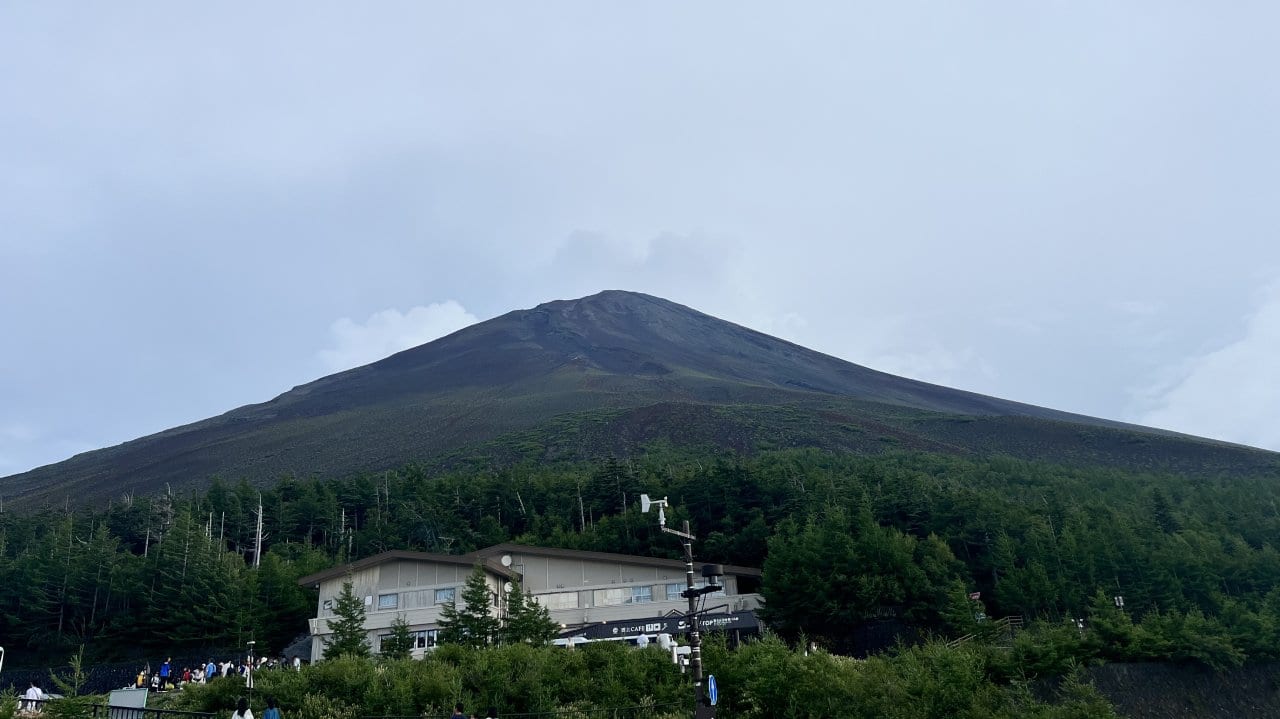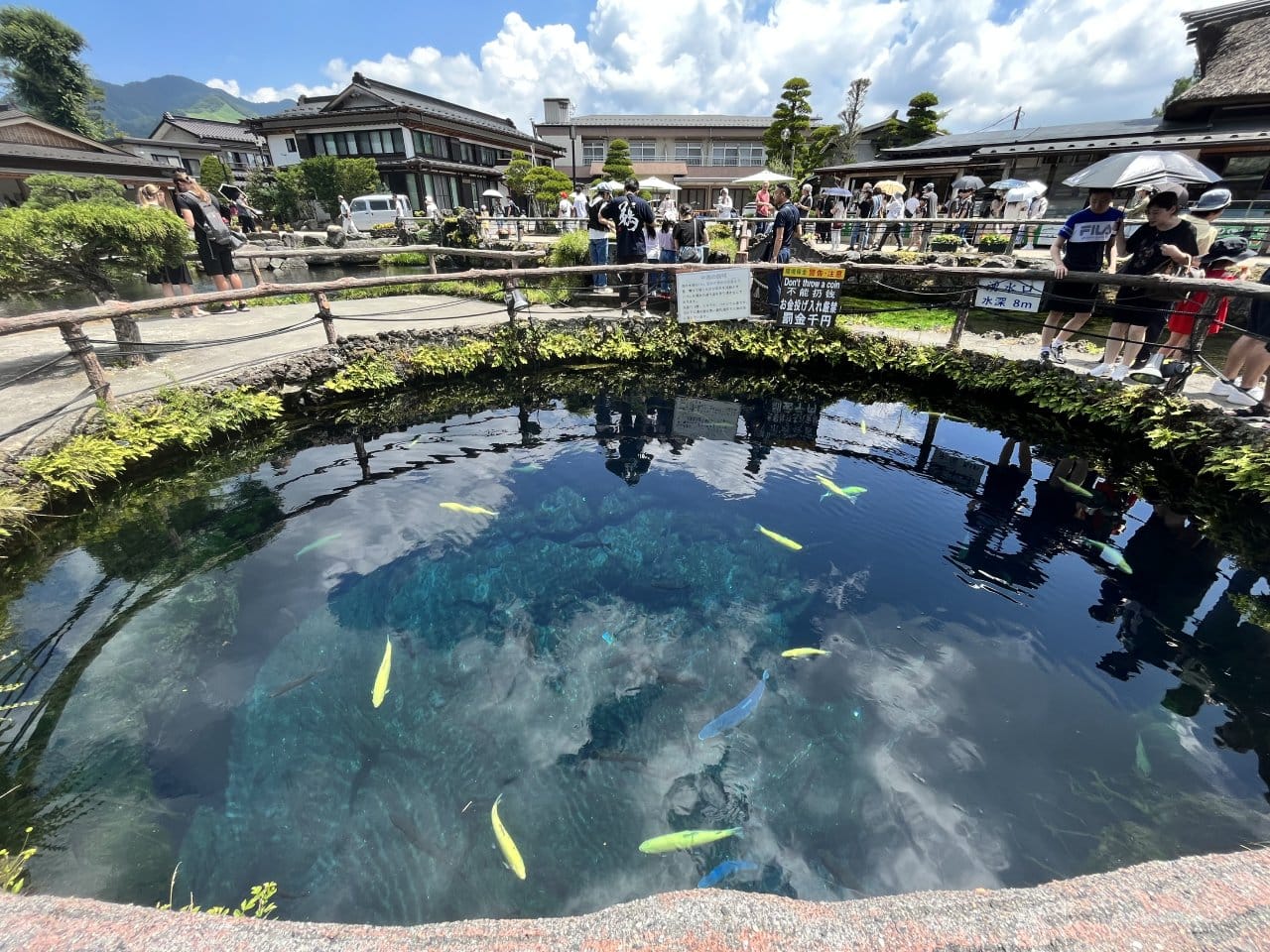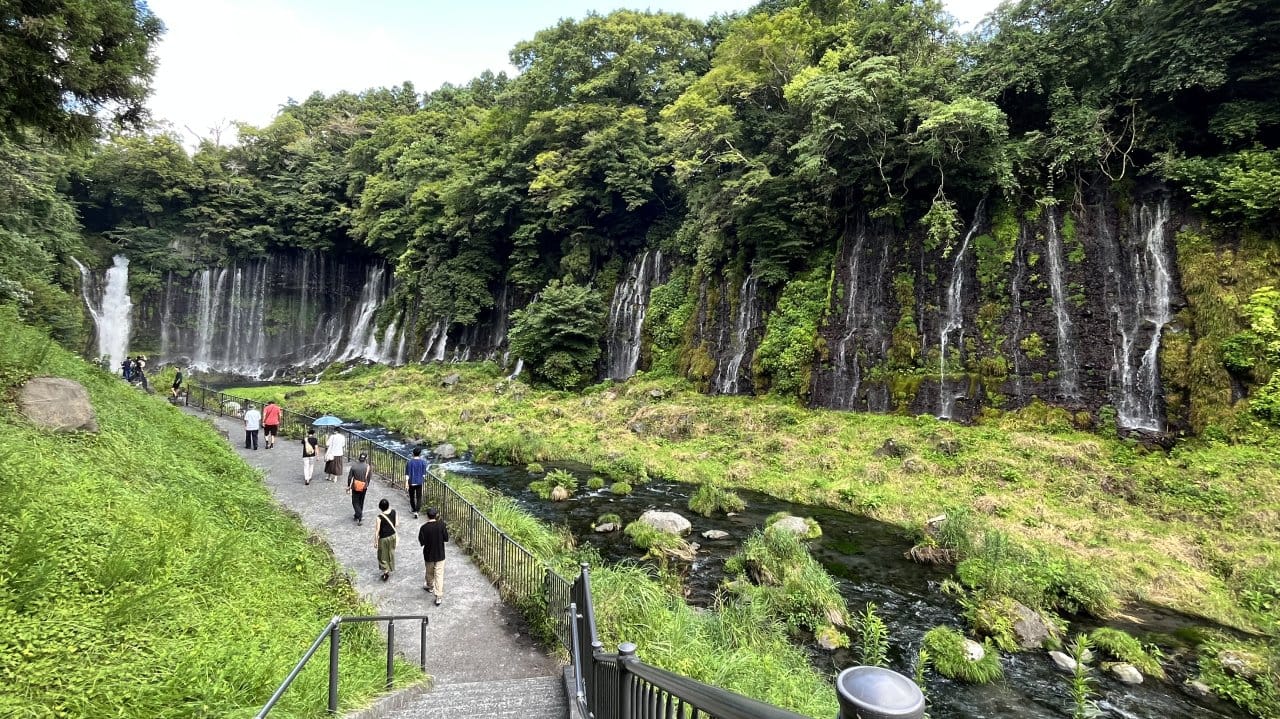



It’s nearly 4 pm. We’ve just driven up a winding mountain road with bends so tight, they could be on an F1 track. A sudden cool breeze catches us off guard, but we ignore the slight shivers and focus on the incredible scene unfolding in front of us. The mist that shrouded the mountain peak is lifting. Mount Fuji, majestic and serene, now looms ahead.
It's our third day in Japan. So far, we’ve spent time soaking up the culture, sightseeing, and indulging in the local cuisine (hello, matcha!). But the country’s most iconic symbol of beauty and strength has never been far from our minds. In fact, it was the first thing we looked for when the plane descended into Narita International Airport.
It’s elusive, though. Clouds and poor visibility often block the view of Mount Fuji in the summer months. You need to be really lucky to get a clear view of the mountain from Tokyo or Yokohama, or while taking the shinkansen (bullet train) from the capital in the direction of Nagoya, Kyoto and Osaka. Things do get better in the winter months, especially January and February when the mountain is visible about 70 percent of the time. It’s also easier to spot it in the early morning and late evening than during the mid-day.
What makes it so special?
Mount Fuji (Fujisan) is Japan's highest mountain (3,776 metres), and is beautifully covered in snow for about half of the year. The almost perfectly shaped volcano, which last erupted in 1707, has been worshipped as a sacred mountain by the locals for centuries now. It’s also inspired various works of art, including poems, paintings and literature, and remains a big draw among tourists.
If you’ve planned the trip in August, like us, you will not see the famous snow-capped peak. But it does give you a chance to climb the mountain, which is one of the three ways locals worship it (the other two being viewing Mount Fuji from a distance, and creating pictures or literature featuring it).
The official Mount Fuji climbing season runs from early July to mid-September, when the weather is milder, the mountain is free of snow, and there are places to stay on it at night. However, you may want to avoid summiting during the Obon holiday (mid-August), as there is often a long line of people waiting to climb to the top. Mount Fuji can also be climbed during the off-season, but from October to mid-June, there is a risk of avalanches and you will definitely encounter snow, ice, and strong winds.
Surprisingly, climbing Mount Fuji is relatively easy, and there is no need for a guide if you ascend during the official season. The paths are broad and the ascent isn’t too steep. The most significant considerations are the thinning of the air as the altitude increases and your own level of fitness.
You can, however, take a shortcut by driving up to the 5th station (start base for many climbers, it also offers unobstructed views of the famous Fuji Five Lakes, Fujiyoshida City, and Lake Yamanaka), and then start a trail from there. The Yoshida, Subashiri, Gotemba and Fujinomiya trails vary in distance and difficulty, but they will get you to the top of Mount Fuji.
 The 5th station start base for many Mt Fuji climbers also offers unobstructed views of the Fuji Five Lakes, Fujiyoshida City, and Lake Yamanaka. (Photo credit: Sneha Mahale)
The 5th station start base for many Mt Fuji climbers also offers unobstructed views of the Fuji Five Lakes, Fujiyoshida City, and Lake Yamanaka. (Photo credit: Sneha Mahale)
Places to check out
If you want to enjoy Mount Fuji from a distance (to see it in all its glory), at a more leisurely pace, and from nice natural surroundings, there are a few options you can explore:
Lake Kawaguchi: It is the most easily accessible of the Fuji Five Lakes, with train and bus connections from Tokyo. For the best views of Mount Fuji, head to the lake's northern shores. During the cherry blossom season (around mid-April) and the autumn colours (around the first half of November), the sight can be especially spectacular.
You can also take the Mount Fuji Panoramic Ropeway from Lake Kawaguchi. It ascends 400 metres from the lake to an observation deck that is close to the peak of Mount Tenjo. From here, you get panoramic views of the lake below and of Mount Fuji. For the more adventurous, there is also a hiking trail that goes down the forested mountain slope. It can take about 30 minutes to descend.
Oshino Hakkai: A set of eight ponds can be found in Oshino, a small village located between Lake Kawaguchi and Lake Yamanaka. These ponds are fed by snowmelt from the slopes of the nearby Mount Fuji, resulting in very clear spring water that is revered by the locals. One pond even lets visitors drink the cool water straight from the source.
 One of the eight ponds that can be found in Oshino. (Photo credit: Sneha Mahale)
One of the eight ponds that can be found in Oshino. (Photo credit: Sneha Mahale)
Shiraito no Taki Waterfalls: Located in the southwestern foothills of Mount Fuji, they are among the most beautiful waterfalls in Japan. The 150-metre-wide cascade is fed by the mountain’s spring water and flows off the edge in thin white streams. It resembles hanging threads of silk, giving the falls their name. The base of the waterfall is easily accessible via a walking trail.
 Shiraito no Taki Waterfalls (Photo credit: Sneha Mahale)
Shiraito no Taki Waterfalls (Photo credit: Sneha Mahale)
Arakura Fuji Sengen Shrine: It was founded in 705. In 807, following the great eruption of Mount Fuji, the emperor dispatched an imperial envoy to the shrine to perform a ritual to halt the eruption. Today, locals and visitors hike up to the shrine to pray for good fortune, safe childbirth, and family happiness. It is also a popular spot to enjoy the stunningly beautiful views of Mount Fuji.
Mount Fuji has much to offer to everyone, if you know where to look. We spent a whole day chasing the mountain, which had been in no mood to reveal itself. At last, at the 5th station, we managed to catch a glimpse of the iconic peak standing tall against the clear blue sky, reaching up to touch the heavens. As we watched the mist envelope the mountain peak, hiding it once again, we knew our journey to Japan was finally complete.
Discover the latest Business News, Sensex, and Nifty updates. Obtain Personal Finance insights, tax queries, and expert opinions on Moneycontrol or download the Moneycontrol App to stay updated!
Find the best of Al News in one place, specially curated for you every weekend.
Stay on top of the latest tech trends and biggest startup news.